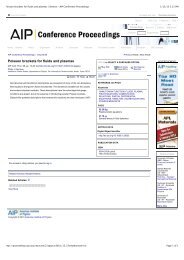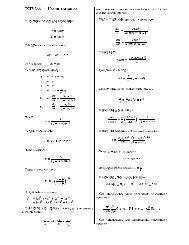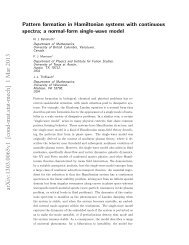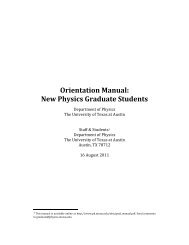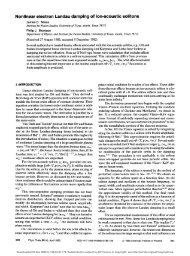Magnetic Fields and Magnetic Diagnostics for Tokamak Plasmas
Magnetic Fields and Magnetic Diagnostics for Tokamak Plasmas
Magnetic Fields and Magnetic Diagnostics for Tokamak Plasmas
Create successful ePaper yourself
Turn your PDF publications into a flip-book with our unique Google optimized e-Paper software.
<strong>Magnetic</strong> fields <strong>and</strong> tokamak plasmas<br />
Alan Wootton<br />
Figure 1.10. The poloidal flux ψ in the plane z = 0 <strong>for</strong> a circular current loop,<br />
radius 1 m, current I = 1/µ 0 . The solid line is the exact solution, the long dash line<br />
is the far field solution, <strong>and</strong> the short dash line is the very near field solution (zero<br />
order in ρ/R terms only).<br />
ψ<br />
exact<br />
very near<br />
zero order<br />
first order<br />
Radius R (m)<br />
Figure 1.11 The poloidal flux ψ in the plane z = 0 <strong>for</strong> a circular current loop,<br />
radius 1 m, current I = 1/µ 0 . The solid line is the exact solution, the short dash line<br />
is the first order expansion in ρ/R 0 solution keeping terms of order ρ/R 0 , <strong>and</strong> the<br />
long dash line is the very near field solution (zero order in ρ/R terms only).<br />
We can also compare the zero order, first order <strong>and</strong> exact solutions by plotting contours of ψ in<br />
(R,z) space. This is done in Figure 1.12, <strong>for</strong> the conditions described in the caption of Figure<br />
1.11. We see that it is very important to include the first order in ρ/R 0 terms; even then the<br />
solution contours are significantly different from the exact solution contours. This is very<br />
different from the case of the vector potential, where the zero order solution was accurate.<br />
20



